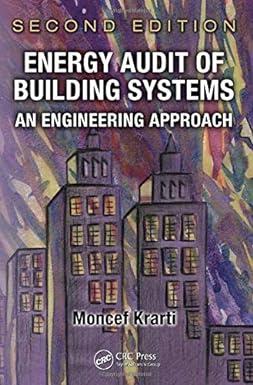Question
Show work in excel: Suppose the Army is considering three alternatives to replace an aging fleet of executive transport aircraft. The three alternatives are (a)
Show work in excel:
Suppose the Army is considering three alternatives to replace an aging fleet of executive transport aircraft. The three alternatives are (a) Buy 10 Puddle Jumpers; (b) Buy 10 Mud Skippers; (c) Lease 10 Criss Crossers; and (d) the status quo is to continue to maintain the existing fleet of 10 Maxi-Fliers. The period of comparison is FY20 through FY29. The status quo and the alternatives are outlined below:
a. Status quo (Maxi-Flier): Ten aging Maxi-Fliers. The Maxi-Fliers can carry 18 passengers, have a range of 3100 nautical miles, achieve a fuel economy of 2.2 gallons per nautical mile, and have a cruising speed of 325 knots. Beginning in FY20, the annual O&S cost to maintain the ten aircraft will be $11M per year per aircraft. It is expected that due to further aging and degradation, this O&S cost will increase by $1.2M per aircraft every year. If one of the alternative options is chosen, then the ten Maxi-Fliers will be sold on the foreign market for $8M per aircraft.
b. Buy Option 1 (Puddle Jumpers): The first purchase alternative is to acquire ten new Puddle Jumpers. The Puddle Jumpers can carry 12 passengers, have a range of 2400 nautical miles, achieve a fuel economy of 2.0 gallons per nautical mile, and have a cruising speed of 475 knots. The annual O&S cost is expected to be $9M per year per aircraft, increasing to $11M per year after five years of operation. These aircraft will be purchased immediately beginning in FY20 at a cost of $25M each, half of which must be paid at the beginning of FY20, and the remaining half of which must be paid at the beginning of FY25.
c. Buy Option 2 (Mud Skippers): Another purchase alternative is to acquire ten new Mud Skippers. The Mud Skippers can carry 20 passengers, have a range of 2900 nautical miles, achieve a fuel economy of 1.8 gallons per nautical mile, and have a cruising speed of 375 knots. The annual O&S cost is expected to be $7.9M per year per aircraft, increasing to $10.2M per year after five years of operation. If this alternative is chosen, it will require one year to modify the hangar at a cost of $5M. The hangar modification will occur during FY20, and the aircraft will then be purchased at the start of FY21. Meanwhile, the Army will continue to use the Maxi-Fliers during FY20. The ten aircraft can be procured for $31M each, paid in full at the beginning of FY21.
b. Lease Option (Criss Crossers): The leasing alternative is to lease ten new Criss Crossers. The Criss Crossers can carry 16 passengers, have a range of 2750 nautical miles, achieve a fuel economy of 1.5 gallons per nautical mile, and have a cruising speed of 300 knots. The leasing cost is $15M per year per aircraft and includes annual operations and maintenance. These aircraft will be leased immediately beginning in FY20. Lease payments will be made on a regular basis throughout each year.
The base commander has asked for an economic analysis of these four alternatives. The four key attributes are (1) number of passengers that can be carried; (2) cruising range; (3) fuel economy (careful smaller is better in this case); and (4) cruising speed. Furthermore, the base commander has established importance weights for these four attributes for use in the economic analysis. These metrics are displayed in the table below:
| Attribute | Weight | Puddle Jumper | Mud Skipper | Criss Crosser | Status Quo |
| Fuel Economy (Gal/mile) | 20% | 2.0 | 1.8 | 1.5 | 2.2 |
| Range (nm) | 35% | 2400 | 2900 | 2750 | 3100 |
| Passengers | 30% | 12 | 20 | 16 | 18 |
| Cruising Speed (kts) | 15% | 475 | 375 | 300 | 325 |
Perform an economic analysis of these three alternatives, given the information provided. Use the Discount Rates found in OMB Circular A-94 you used for the Economic Analysis homework. Remember to make a recommendation.

Step by Step Solution
There are 3 Steps involved in it
Step: 1

Get Instant Access to Expert-Tailored Solutions
See step-by-step solutions with expert insights and AI powered tools for academic success
Step: 2

Step: 3

Ace Your Homework with AI
Get the answers you need in no time with our AI-driven, step-by-step assistance
Get Started


